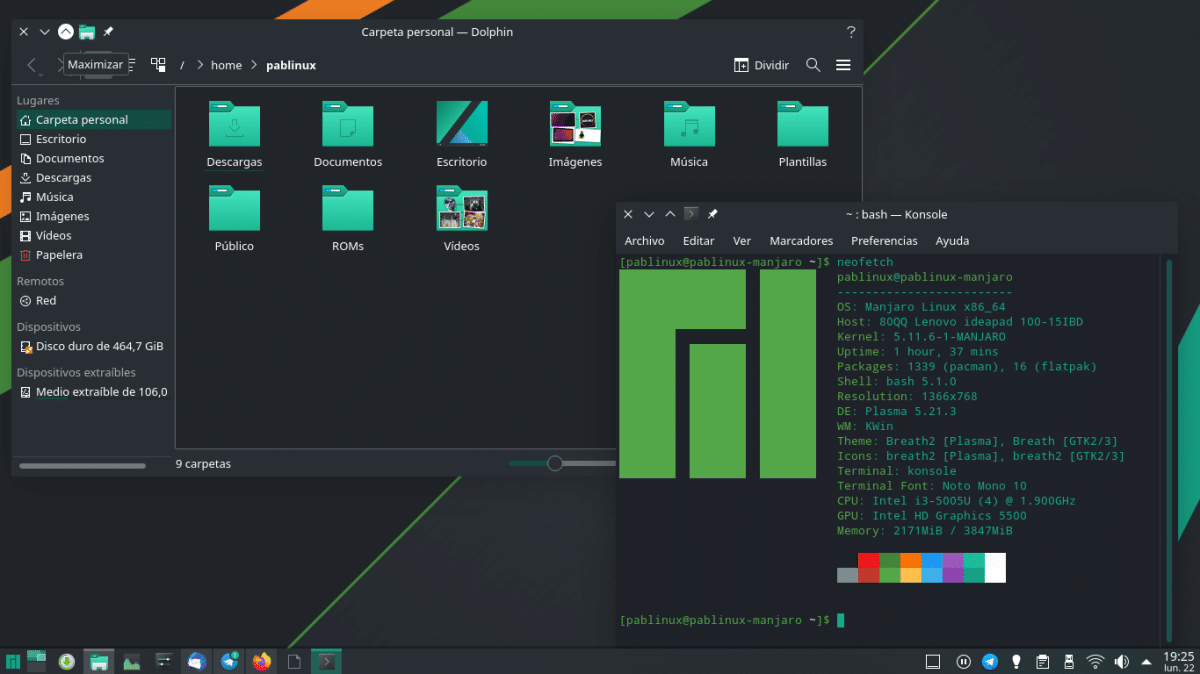
A few months ago we showed you how install Manjaro on a pendrive in the safest way. That system allows us to install the famous Arch Linux-based distribution from an image specially designed for it, but, like many of these images, it has its limitations, not to mention that it is only available in its Xfce desktop edition. Today we are going to teach you how to install Manjaro on a pendrive otherwise it is much more worth it, although you have to be careful not to screw it up.
Using this method we will be able to install Manjaro as if we were doing it on the hard drive. Everything will be the same as if we installed it on the PC, with the difference that we will have to start from the USB to be able to use it. Also, this works with any edition of Manjaro, so we can choose the KDE edition which is the one I like the most. We won't have to add anything to the sudoers file either, so we can use the sudo pacman -Syu command to install and update packages.
How to install Manjaro on a Pendrive
Before we start, we have to explain what we need:
- A computer.
- An ISO image of Manjaro, available here.
- A program to create an installation USB, such as Etcher.
- Two pendrives, one in which we will create the installation USB and the other in which we will install the operating system. The minimum size must be 4GB if we choose a "Minimal" version or 8GB if we choose a normal version. The normal ones include a lot of software that becomes bloatware.
Installation Process
- We go to the download website and download any version of Manjaro.
- If we don't have it installed, we install Etcher or any other software to create an installation USB.
- We insert a pendrive and create the installation USB. In the third point above you have a link that explains how to do it with Etcher.
- Once we have the USB created, we restart the computer and start from it.
- Before entering the Live Session, we have to choose our language, zone and keyboard layout. We can also choose whether to enter with proprietary or open source drivers. Once chosen, we enter.
- It is advisable to connect to the internet, but we can install the system offline.
- We click on "Open Installer".
- When it finishes analyzing, we click on «Next».
- We make sure to set our time zone and format correctly.
- From here is where the important thing comes from, and where we have to be careful. In "Select a storage device", we choose our pendrive, that is, in which we want to install Manjaro. If we make a mistake here, we can screw up the operating system that the PC has.
- We click on «Erase disk».
- If we want, we can make him create a swap area for us. In the example, I have chosen "no hibernation", because it is something that I don't usually use.
- We check that everything is correct and click «Next».
- We fill in the fields of Name, Team name, we put a password and we click on «Next».
- We chose an office suite. I have decided not to install any because I want LibreOffice in its latest version. If we install it from here, it will install the recommended version, which is somewhat older and more stable. And «Next».
- We check that everything is correct one more time. We are still in time to not spoil anything, but I insist on making sure that we are installing it on the pendrive.
- We wait for the installation to finish. It takes longer than if we do it on the hard disk; the video is very sped up.
- At the end of the installation, we can check the box to restart or continue testing.
- Now we only have to restart and enter from the USB.
Ready to use
And the thing is that the Live Sessions are fine, the virtual machines as well and the dual-boot as well, but this of always taking "a PC" with us without endangering the information on our computers is more cool, right?
A less conventional way is with LiveUSB Install found in the AUR repositories (for those with an Arch-based distribution), without actually having to install the Manjaro operating system on the device.
You can install Manjaro to an external hard drive just by making three partitions, 1 EFI partition of 500m and another of the system / in Ext4 with about 100GB or more (with these two partitions the system will start) and one that can be left in NTF format for It can be read by other PCs and passed files (The disk has to be GPT or format it in GPT).